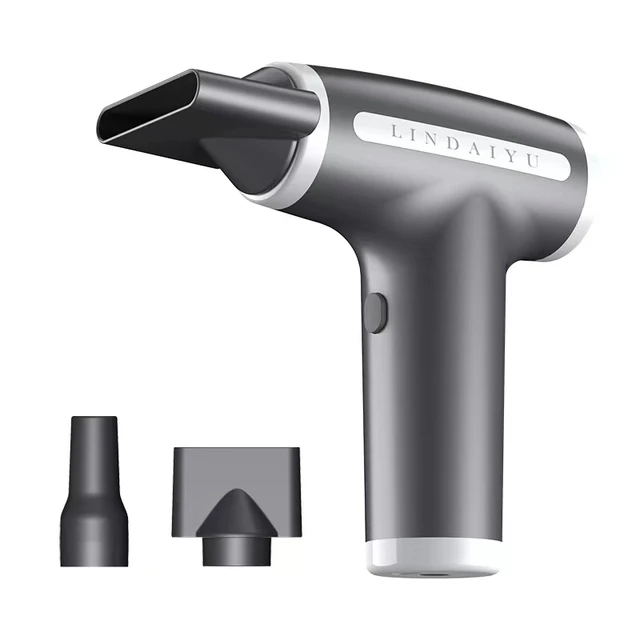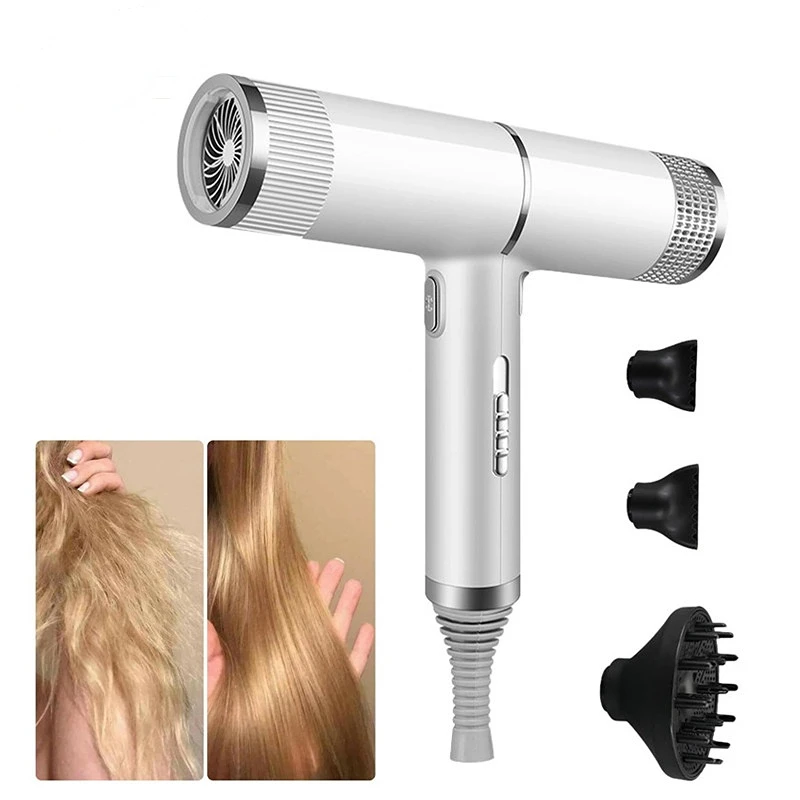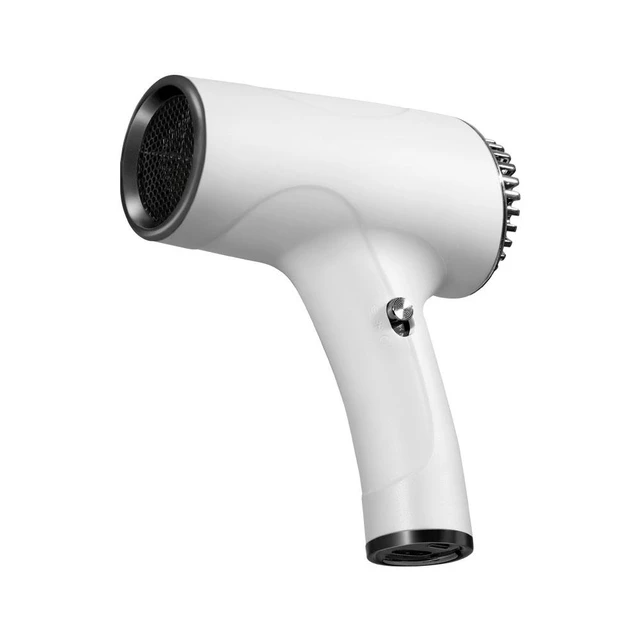Hair dryers are a staple in many households, offering the convenience of quick drying and styling. But have you ever paused to think about how much energy these devices actually consume? Understanding hair dryer power consumption can help you make informed decisions about your energy use, potentially saving money and reducing your environmental footprint. Let’s delve into the factors that influence hair dryer power consumption and explore ways to optimize their energy efficiency.
Understanding Hair Dryer Power Ratings
Wattage Explained
The power consumption of a hair dryer is primarily determined by its wattage, which is a measure of how much electrical power the device uses. Most hair dryers range from 800 to 2,000 watts. Higher wattage typically means faster drying times but also more energy consumption. Understanding the wattage of your hair dryer helps you gauge its energy usage and find a balance between performance and efficiency.
Impact of Wattage on Performance
Higher wattage hair dryers tend to produce more heat, leading to quicker drying and potential time savings. However, the trade-off is higher energy consumption. Conversely, lower wattage hair dryers consume less power but may require longer usage times to achieve the same results. Finding the right balance between wattage and performance is essential for optimizing both drying efficiency and energy use.
Types of Hair Dryers and Their Energy Use
Basic Models
Basic hair dryers, often found in hotel rooms or as budget options, usually fall in the lower wattage range of 800 to 1,200 watts. These models are typically less expensive and more energy-efficient but may take longer to dry hair. They are suitable for occasional use but may not be ideal for those who need quick drying times regularly. Evaluating your specific needs can help you determine if a basic model suffices.
Professional Models
Professional hair dryers, used mainly in salons or by individuals who style their hair frequently, usually have wattages between 1,500 and 2,000 watts. These models are designed for rapid drying and robust performance but consume significantly more energy. Their advanced features, like multiple heat and speed settings, contribute to higher power use but also provide greater styling flexibility.
Ionic and Ceramic Models
Ionic and ceramic hair dryers represent a class of hair dryers that use advanced technology to enhance drying efficiency while protecting hair health. Ionic models emit negative ions that break down water molecules, allowing for faster drying at potentially lower temperatures. Ceramic hair dryers distribute heat more evenly, reducing the risk of hair damage. While these models can have varying wattages, their technology can sometimes offer more efficient energy use compared to traditional models.
Factors Affecting Power Consumption
Heat and Speed Settings
Most hair dryers come with adjustable heat and speed settings that significantly impact their power consumption. Higher heat and speed settings consume more energy but shorten drying time. Using lower settings can save energy, though it may extend drying time. Experimenting with different combinations to find an optimal balance can lead to energy savings without compromising drying efficiency.
Usage Duration
The amount of time you use your hair dryer directly affects its energy consumption. Frequent or prolonged use can lead to higher electricity bills. Monitoring how long you use your hair dryer and aiming to reduce drying time can contribute to energy efficiency. Simple steps like towel drying your hair as much as possible before using the hair dryer can make a significant difference.
Calculating Power Consumption
Basic Calculation Formula
Calculating the power consumption of your hair dryer involves a straightforward formula:
Power Consumption (kWh)=Wattage (W)×Time (hours)/1000
For example, using a 1,500-watt hair dryer for 15 minutes (0.25 hours) would consume:
1,500 W×0.25 hours/1000=0.375 kWh
Annual Energy Use
To understand the annual energy use, multiply the power consumption per use by the number of uses per year. If you use the hair dryer once a day:
0.375 kWh×365 days=136.875 kWh/year
Knowing your annual energy use aids in estimating the electricity cost and foreseeing potential areas for improvement.
Energy Efficiency Tips
Choose the Right Model
Selecting a hair dryer with the appropriate wattage for your needs, and potentially one with energy-efficient technologies, can yield significant energy savings. Models with an Energy Star certification or similar designations are designed to use less power while maintaining performance. Researching and comparing options can help you make an informed choice, balancing energy efficiency and functionality.
Optimize Heat and Speed Settings
Using lower heat and speed settings whenever possible reduces energy consumption. Many modern hair dryers offer cool shot functions or eco modes that use significantly less power. Understanding and utilizing these settings can contribute to more energy-efficient use without greatly impacting drying performance.
Reduce Usage Frequency
Reevaluating the necessity of daily blow-drying can also lead to energy savings. Allowing hair to air dry partially before using the hair dryer or reserving its use for specific occasions can reduce overall power consumption. Finding alternative styling methods that do not require heat can be beneficial for both energy use and hair health.
Environmental Considerations
Carbon Footprint
The energy consumption of a hair dryer contributes to your overall carbon footprint. Higher energy use translates to more significant greenhouse gas emissions, especially if your electricity comes from non-renewable sources. Choosing energy-efficient models and adopting conservative usage habits can help reduce your environmental impact.
Sustainable Practices
Beyond choosing efficient appliances, integrating sustainable practices into your routine can further benefit the environment. This includes unplugging the hair dryer when not in use, maintaining the appliance regularly for optimal performance, and considering renewable energy sources for your household electricity. Small changes in daily habits can lead to meaningful environmental contributions over time.
 Technological Innovations
Technological Innovations
Infrared Hair Dryers
Infrared hair dryers use infrared light to heat hair from the inside out, offering quicker drying times without high heat exposure. This technology can result in lower energy consumption compared to traditional hair dryers. While these models may have a higher initial cost, their efficiency and gentle drying process can prolong the health of your hair and reduce energy use.
Brushless Motor Technology
Some modern hair dryers incorporate brushless motor technology, which is more efficient and durable than traditional motors. These motors use less energy and generate less heat, contributing to a longer lifespan and better performance. Investing in a hair dryer with a brushless motor can lead to lower energy bills and reduced replacement frequency.
Cost Implications
Short-Term Costs
While investing in an energy-efficient hair dryer might have higher upfront costs, the benefits often outweigh these initial expenses. Improved performance and reduced drying times save energy, leading to lower electricity bills. Considering the total cost of ownership, including energy use, can guide you in making cost-effective decisions.
Long-Term Savings
Energy-efficient hair dryers offer long-term savings by reducing electricity consumption and potential maintenance costs. Over time, these savings can accumulate, making the initial investment more economical. Additionally, the enhanced durability of advanced models means fewer replacements, contributing to overall cost savings.
Comparing Brands and Models
Top Brands Offering Efficiency
Several reputable brands focus on producing energy-efficient hair dryers. Brands like Dyson, BaByliss, and Remington offer models designed to deliver high performance with lower energy consumption. These brands often integrate innovative technologies and provide reliable options for consumers seeking efficiency without compromising on quality.
Features to Look For
When comparing models, consider features like multiple heat and speed settings, cool shot functions, ionic and ceramic technology, and energy-efficient motors. Reading reviews and performance ratings can provide insights into the most efficient and effective models available. Prioritizing these features can lead to better energy management and overall satisfaction with your purchase.
Conclusion
Understanding hair dryer power consumption involves looking at various factors, including wattage, settings, usage frequency, and technological innovations. By making informed choices about the model you select and adopting energy-efficient practices, you can significantly reduce your energy consumption without sacrificing hair care quality. Whether choosing a hair dryer with advanced features, optimizing your usage habits, or considering the environmental impact, each step you take contributes to more conscious and efficient energy use. So, how much power does your hair dryer consume? The answer depends on a combination of factors, but with the right approach, you can manage and reduce its impact effectively.

